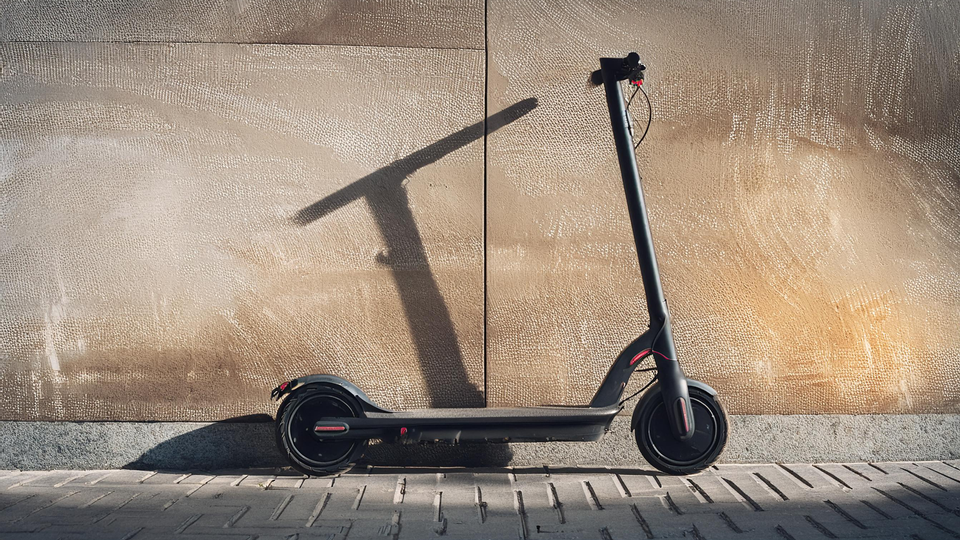
Storing Your Electric Scooter
Electric scooters are fantastic modes of transportation, offering a convenient and eco-friendly way to navigate urban environments.
To ensure that your electric scooter remains in top condition and delivers optimal performance, it's crucial to store and maintain it properly. Here's a comprehensive guide on where and how to store your electric scooter, along with some essential maintenance tips.
Where to Store
1.Indoor Storage: Always store your electric scooter in an indoor environment. A dry and temperature-controlled environment will protect the scooter from harsh weather conditions and potential damage. Avoid damp basements or overly humid rooms, as moisture can lead to rust and electrical issues.
2. Storage considerations: Avoid storing or charging e-scooters on escape routes or in communal areas of a multi-occupied building. If there is a malfunction or issue, it can affect people's ability to escape, creating a safety hazard.
Responsible Persons should always consider the risks posed by e-scooters when they are charged or stored in common areas such as means of escape, bike stores and mobility scooter charging rooms. For more information on safety see the link at the bottom.
2. Temperature Considerations: The ideal storage temperature for an electric scooter is between 0 to 50 degrees Celsius. Never store your scooter in environments where the temperature drops below -20 degrees Celsius or exceeds 50 degrees Celsius. Extreme temperatures can degrade the battery and other components, reducing the scooter's lifespan.
3. Avoiding Low Temperatures: Storing at low temperatures can permanently damage the battery. If you need to charge the battery and the ambient temperature is below 0 degrees Celsius, bring it into a warmer environment first. Charging the battery in cold conditions can sometimes cause irreversible damage.
How to Store
Battery Maintenance: Ensure that the battery is fully charged before storage. To maintain battery health, recharge the battery every 30 days. This practice prevents the battery from discharging completely, which can shorten its lifespan.
Power Off: Always switch off the power on your scooter when it's not in use. This prevents unnecessary battery drain and protects the scooter’s electrical system.
Short-Term and Long-Term Storage: For short-term storage, follow the regular charging routine and keep the scooter in a suitable environment. For long-term storage (up to six months), ensure the battery is charged and stored in a cool, dry place. Avoid storing the scooter for more than six months without use, as this can negatively impact the battery and other components.
Operating and Maintenance Tips
Terrain: Smooth, flat surfaces will maximise your scooter's driving distance. Rough or uneven terrain and driving uphill can significantly reduce the range.
Weight Considerations: The weight of the rider affects the scooter's range. Lighter riders will typically experience a longer driving distance compared to heavier riders.
Ambient Temperature: Ride and store your scooter within the recommended temperature range to maintain good battery life and performance.
Battery Charging and Maintenance: Regular and reasonable battery charging is crucial. Overcharging the battery can reduce its range. Always follow the manufacturer’s guidelines for charging times and intervals.
Speed and Driving Style: Moderate speeds will help increase your scooter’s range. High-speed driving, frequent starts and stops, and rapid acceleration and deceleration can decrease the overall distance you can travel on a single charge.
Legal and Safe Riding Practices
1.Riding Locations: You should not ride your electric scooter near, on public roads, or in overcrowded areas. Stick to paved roads that are flat and even and maintain a safe distance from other road users.
Whilst it's legal to own and use an e-scooter it should be done on private land with the permission of the land owner. It's legal to use a rental e-scooter on a public road or cycle lane, provided you have the correct license and follow road traffic regulations.
2. Avoid Hazardous Conditions: Do not ride in or near puddles, mud, sand, gravel, or debris. Avoid riding in inclement weather, such as snow, rain, hail, or sleet, and on icy roads or in extreme heat. This both reduces potential hazards to you and damage to your e-scooter.
3. Intended Use: Electric scooters are not designed for acrobatic or off-road use. Do not ride indoors or on surfaces that can be easily damaged, such as carpet or glossy flooring.
By following these guidelines, you can ensure that your electric scooter remains in excellent condition, providing you with a reliable and enjoyable ride for years to come. Proper and safe storage, maintenance, and safe riding practices are key to maximising the performance and longevity of your e-scooter.
For more advice on safe storage and care for electric scooters and bike please visit the National Fire Chiefs Council (NFCC) website: https://nfcc.org.uk/our-services/position-statements/e-bikes-and-e-scooters-fire-safety-guidance/